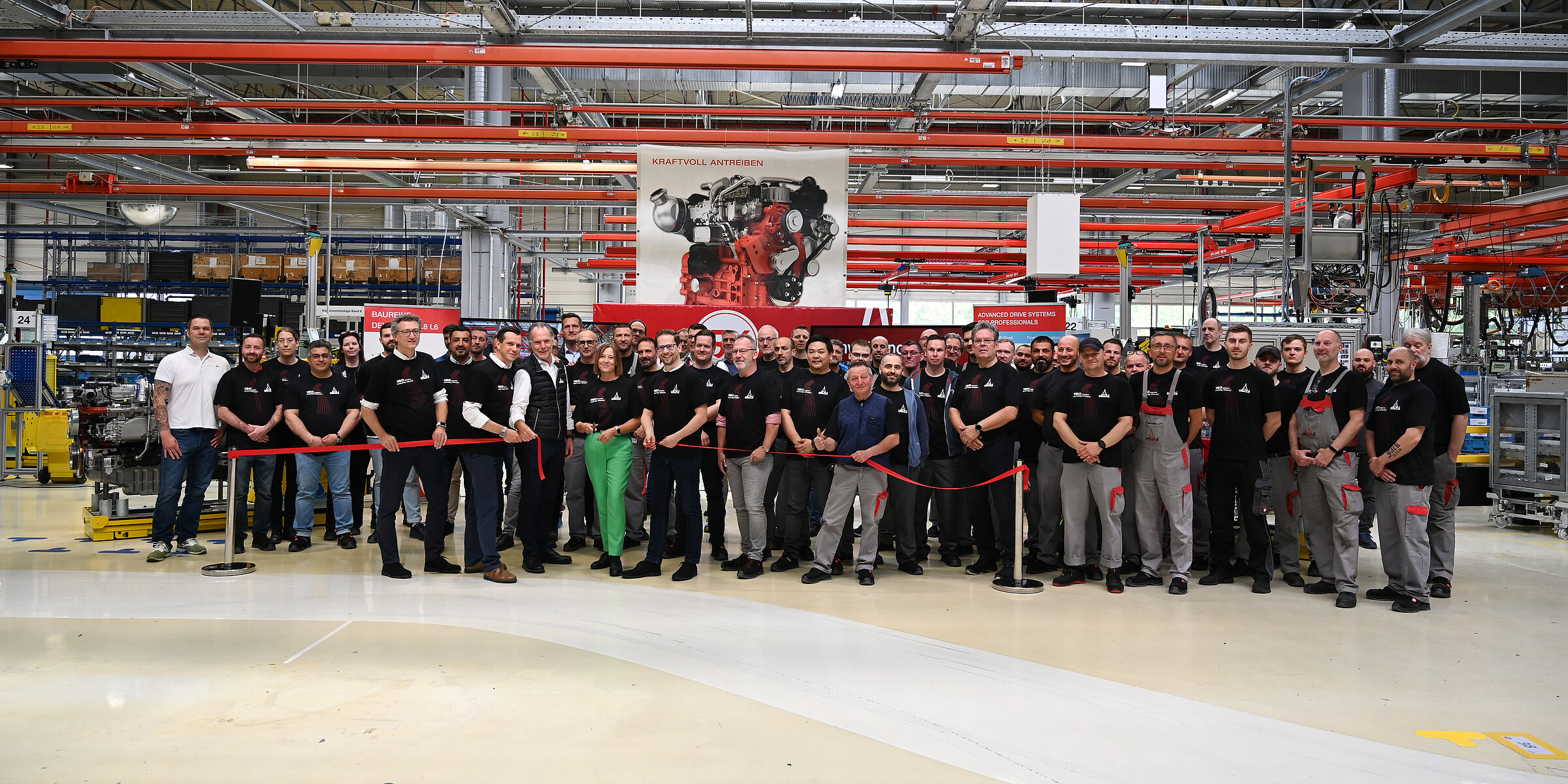Demand for engines fell over the course of 2024, which had a noticeable impact on production at DEUTZ. The way in which management teams and employees at our Porz assembly plant rose to the challenge is a testament to the strength of their identification with the Company and to our special DEUTZ spirit.
Maximum flexibility is the order of the day, and so assembly lines were optimized, work steps resynchronized, and capacities adjusted. Employees, some of whom had been working for decades at a particular station, were retrained so that they could be deployed as required. “It wasn’t just our technology and production facilities that were made more flexible – our employees showed flexibility too, and helped to deliver the change,” says Oliver Hügele, Vice President Plant Manager at DEUTZ. This commitment on the part of employees is predicated on a high degree of transparency, with managers holding regular town hall meetings, seminars, and Q&As to keep everyone in production up to date on the status quo and the associated targets.
Specifically, the sub-4 liter production line – line 5 – was switched from a three-shift to a two-shift operation and optimized both technically and in terms of production rate. This means improved performance and an output of 31 engines per hour instead of 30. Although this requires more employees per shift, it has made the work on line 5 more productive overall. And because the production rate of line 2 was also increased and
reduced from two shifts to one, it allowed some workers to be retrained and moved from there to line 5 or line 6.
The final engines rolled off line 3 in March 2024. This then became our new line 6 and since April 2024 we have been producing 4–8 liter engines and hydrogen engines there as part of a flexible set-up. Among the features of this innovative system are direct material feed-in, a digital worker information system, and tightening technology that travels along the assembly line. Whereas assembly lines 2 and 5 are able to produce at high volumes, line 6 offers a high degree of flexibility. We can build almost all our sub-4 liter engines there – utilizing everything from synchronized flow assembly to the ‘one man, one engine’ principle, in which one assembly worker accompanies the automated guided vehicle (AGV) with the engine from station to station and completes all work steps.
Oliver Hügele and his teams achieved a lot last year: “Flexibility was a key factor for us in 2024,” he says. “We responded to market volatility through our people, our technology, and our optimized processes. And because this has worked so well, it means that we are well equipped for the future and feel we can handle anything that comes our way.”

Flexibility in assembly: DEUTZ’s Porz plant is able to respond to different market conditions with increasing flexibility.

